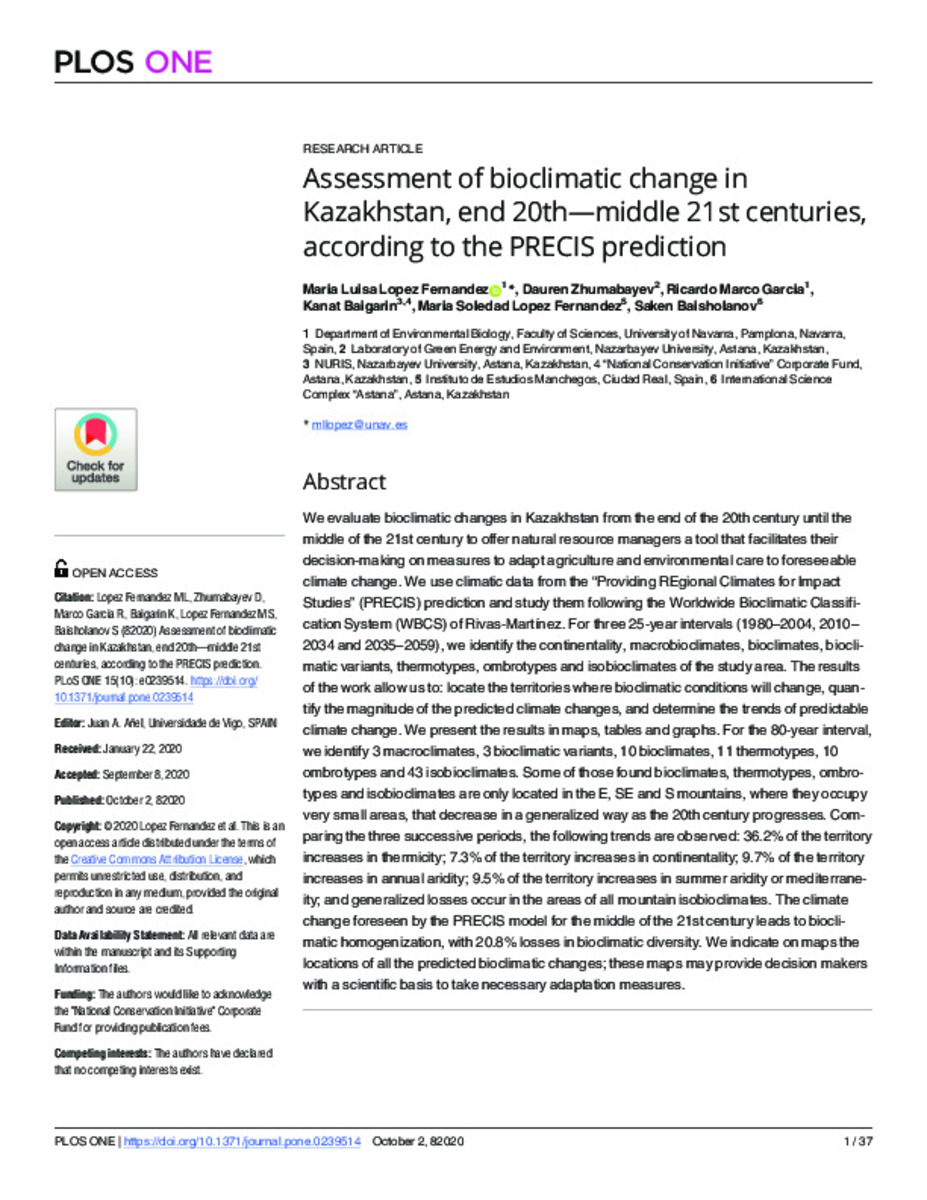Assessment of bioclimatic change in Kazakhstan, end 20th—middle 21st centuries, according to the PRECIS prediction
Files in This Item:
Statistics and impact
Items in Dadun are protected by copyright, with all rights reserved, unless otherwise indicated.







